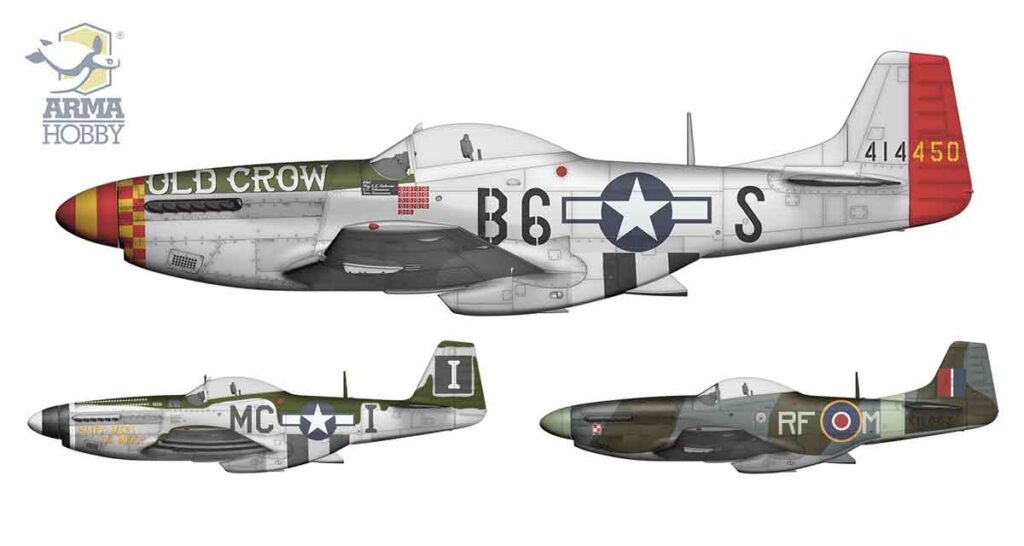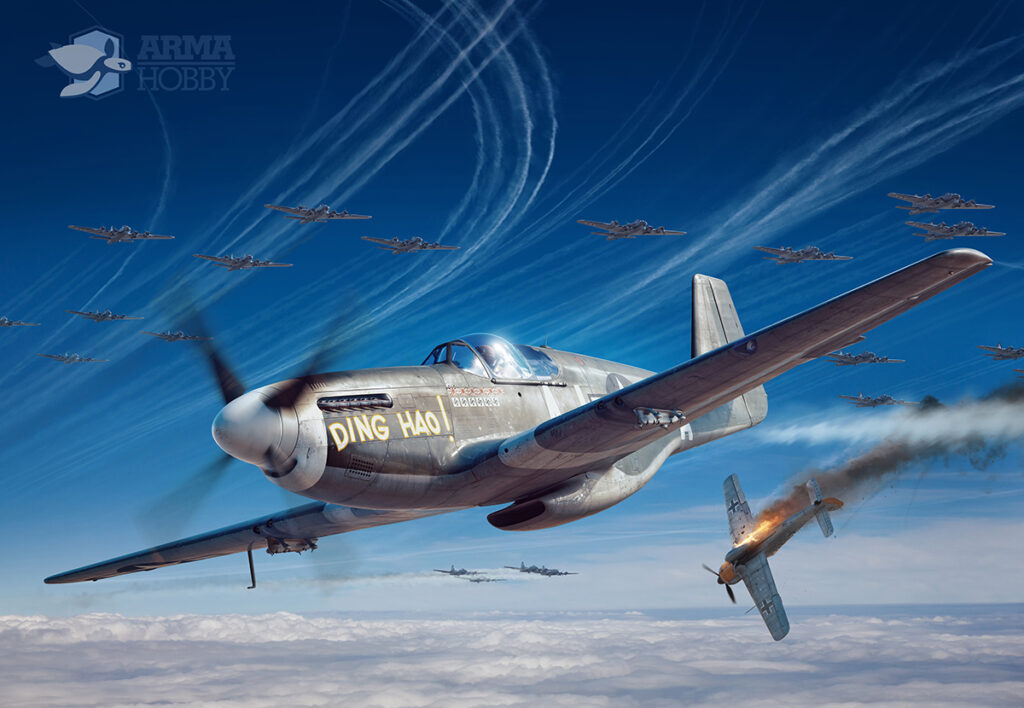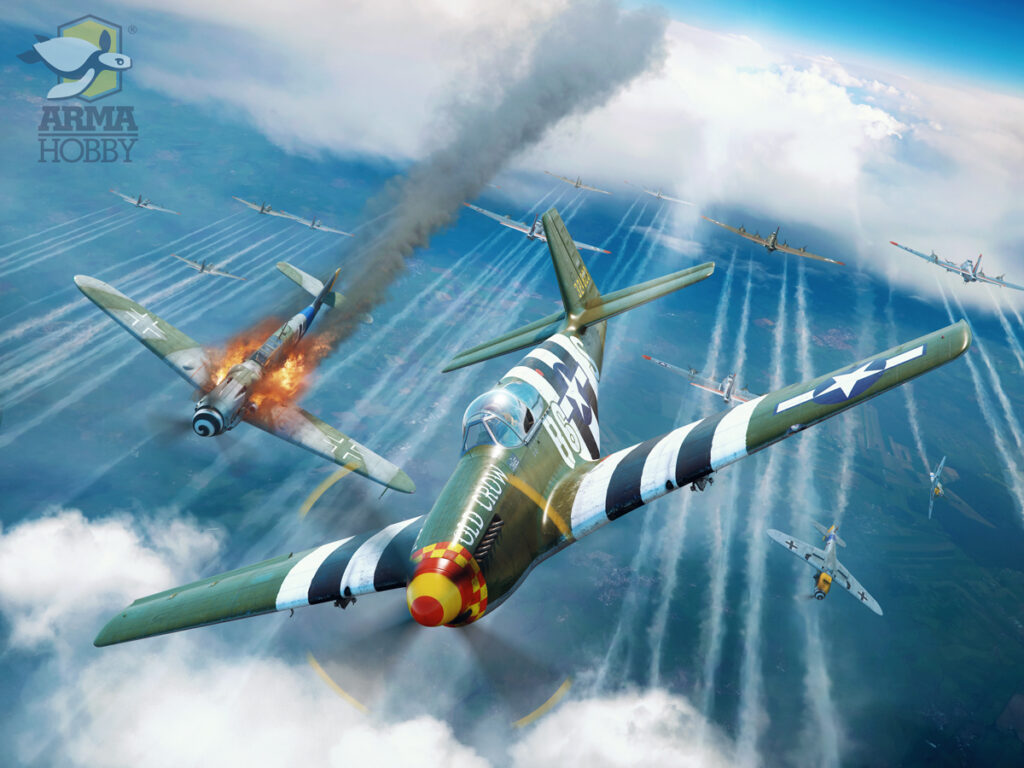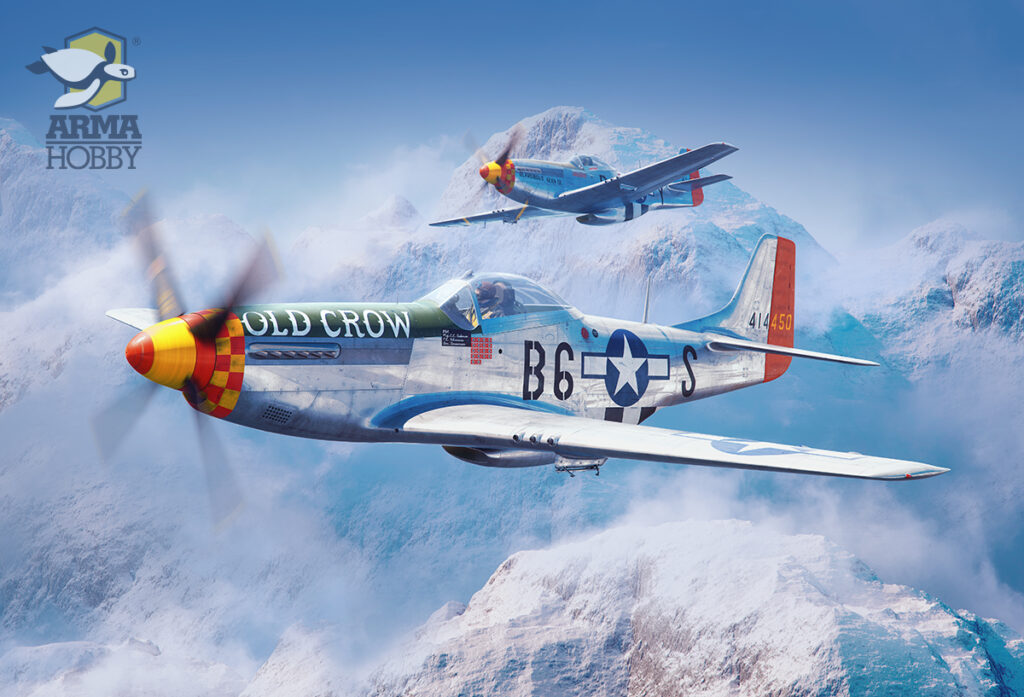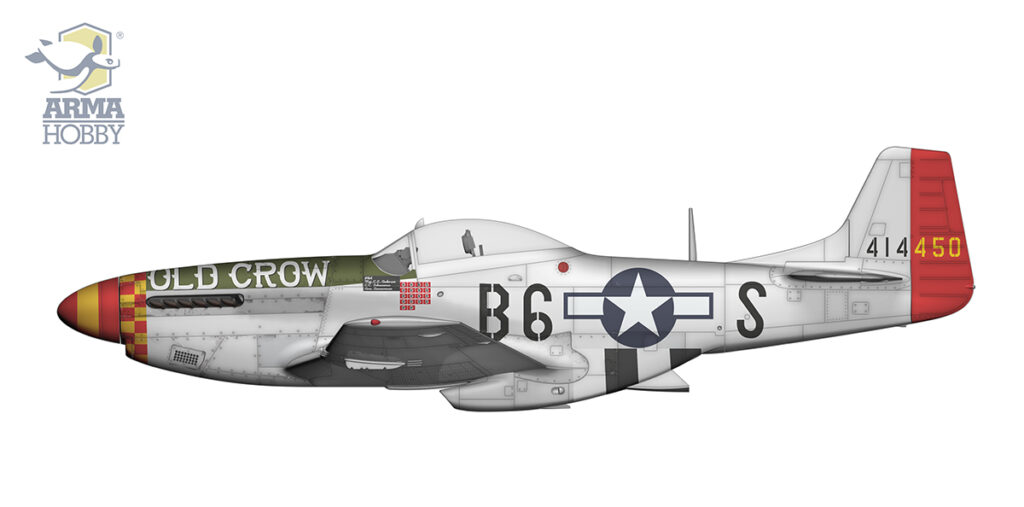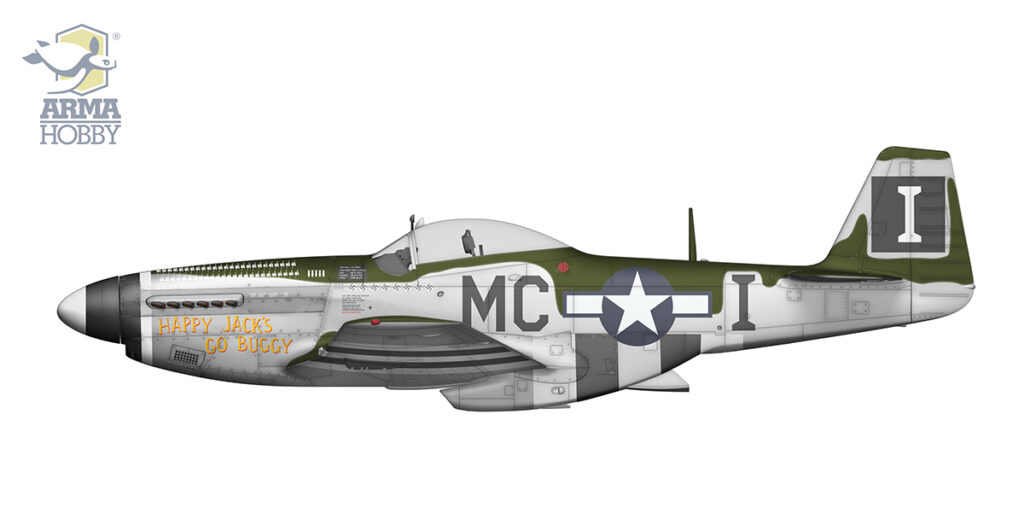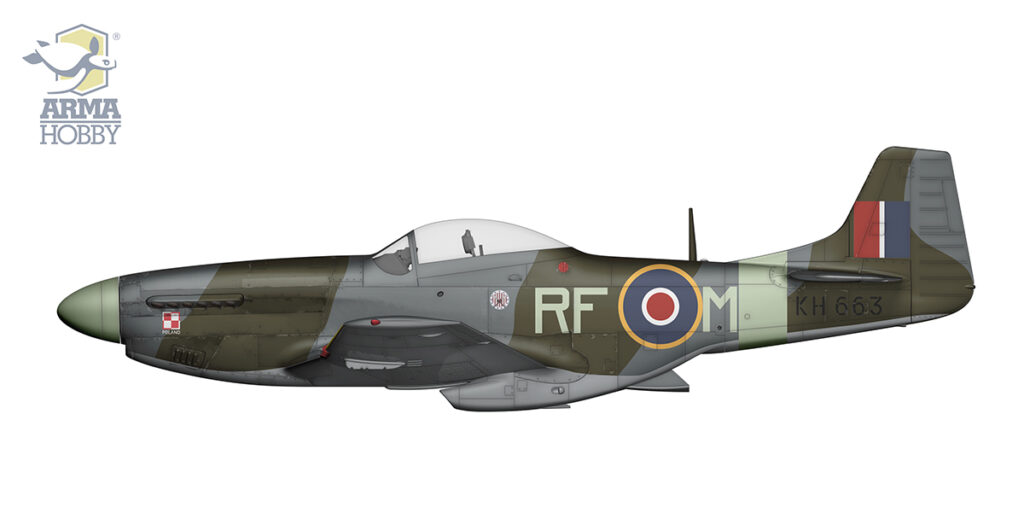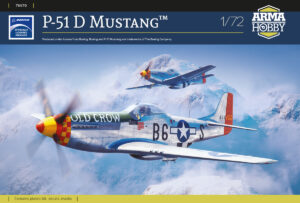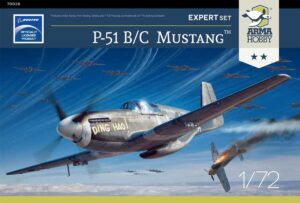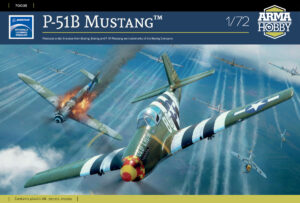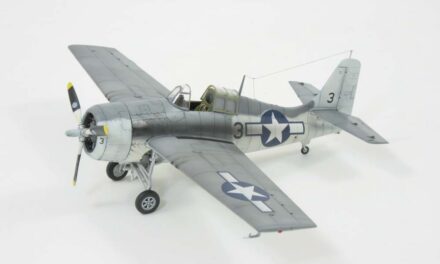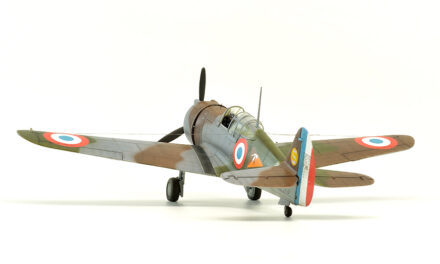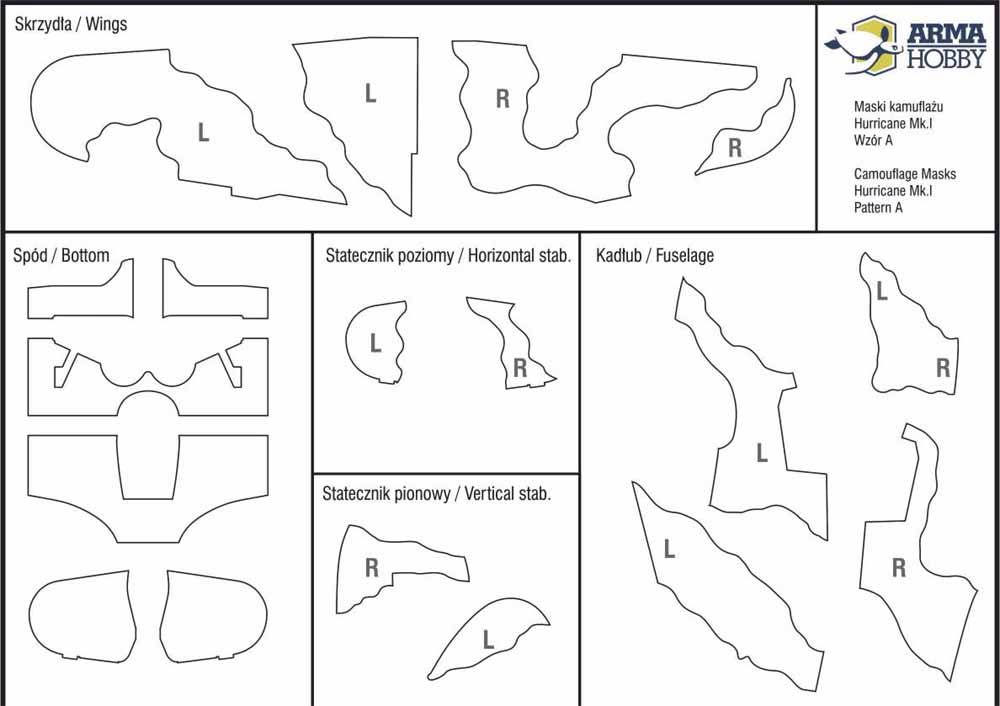The kit represents the early versions of the P-51D-5/D-10 Mustang, which took part in the air war over Germany in 1944–1945 with the 8th USAAF and the Polish Air Force in the RAF. The Mustang became an icon of Allied air power, effectively escorting bombers and gaining air superiority over the Luftwaffe. Let’s now take a closer look at its historical background and the painting schemes included in this kit.
P-51D Mustang – the victorious fighter over Europe
The P-51D Mustang was the most recognizable and most widely produced version of the famous North American fighter. Equipped with the Packard-built version of the Rolls-Royce Merlin engine, it became one of the most outstanding aircraft of the Second World War. The P-51D, combining speed, maneuverability, and very long range, enabled the Allies to seize the initiative in the air war over Europe and break the power of the Luftwaffe.
- Go to colour schemes from 70070 P-51D Mustang™ kit link
P-51B/C – the first full-range escort
The earlier P-51B and C, which appeared over Europe in late 1943, proved their value as fast, long-range escort fighters. For the first time they allowed American strategic bombers to fly from England to Berlin and back, with a combat range of over 2,600 km, thanks to large internal fuel tanks and drop tanks. From then on, strategic bombing missions could continue without the catastrophic losses that had nearly forced their suspension just months earlier.
Mustang piloted by Maj J. H. Howard in aerial combat, April 1944. Artwork by Piotr Forkasiewicz.
Doolittle’s order
A turning point came in January 1944, when General James H. Doolittle took command of the U.S. 8th Air Force. Shortly after assuming command, he issued the famous order that escort fighters were to destroy the Luftwaffe wherever they could be found – in the air and on the ground. This radically changed the nature of operations: Mustangs could seize the initiative, engage German fighters before they reached bomber formations, ambush them near their airfields, and attack aircraft on the ground as well as rail and road transport. The effectiveness of this tactic became clear during the “Big Week” bombing offensive in February 1944, when the Luftwaffe suffered devastating losses.
P-51B Mustang™ piloted by Lt. Clarence „Bud” Anderson, June-July 1944, artwork by Piotr Forkasiewicz.
P-51D – an improved version
The P-51D was a technical development of the B/C. It retained their excellent combat range (over 2,600 km – enough for Berlin and back), while introducing key improvements. A new “bubble canopy” gave pilots unmatched all-round visibility – a priceless advantage in dogfights. Armament was increased to six .50 cal Browning machine guns, providing massive firepower. At the same time the Mustang retained superb flying qualities: fast, agile, and stable at high altitude, it was a deadly opponent for both the Fw 190 and Bf 109.
Last flight by Lt. Clarence „Bud” Anderson, 14th January 1945 r. in vincinity of the Mont Blanc. Artwork by Piotr Forkasiewicz.
Allied air superiority
The arrival of the Mustang coincided with the intensification of the Allied strategic bombing campaign and preparations for the Normandy invasion. From spring 1944, the Luftwaffe suffered catastrophic losses – both in aerial combat and through systematic destruction of its logistics and airfields. By D-Day, German fighters were forced to operate in scattered, small-scale actions, unable to challenge Allied air superiority.
A symbol of victory
The P-51D Mustang became the symbol of this shift – a fighter that not only escorted bomber formations effectively but also struck offensively at the enemy wherever he was vulnerable. Its long wings, sleek silhouette, and powerful Merlin engine made it a true Luftwaffe killer and one of the greatest fighters in aviation history.
Colour schemes from #70070 P-51D Mustang 1/72 kit
North American P-51D-10-NA Mustang, nr 44-14450 / B6-S
Pilot: Lt. Clarence „Bud” Anderson
375th Fighter Group, 363rd Fighter Squadron, 9th Air Force, RAF Leiston, United Kingdom, January 1945
Aircraft of one of the leading American fighter aces of World War II. Originally painted in British camouflage colours Dark Green and Sea Grey Medium, it was stripped of paint at the pilot’s request, leaving natural metal surfaces. Only the anti-glare panel in front of the cockpit remained in Dark Green. Read More Link
P-51D-5-NA Mustang, MC-I
Pilot: Cpt. Jack Ilfrey,
79th Fighter Squadron, 20th Fighter Group, 8th Air Force, RAF Kings Cliffe, England 1944
The upper surfaces of the aircraft were painted in more or less regular patches of British Dark Green. Cpt Jack Ilfrey flew this aeroplane over Poland during Frantic VI shuttle mission from England to Ukraine on September 11, 1944. Read More Link.
North American P-51D-5-NT Mustang, nr KH663 / RF-M
Pilot: F/Lt Janusz Franckiewicz
No. 303 (Polish) Fighter Squadron, RAF Andrews Field, United Kingdom, April 1945
On this aircraft, on April 25, 1945, F/Lt Janusz Franckiewicz flew a combat mission escorting Lancaster bombers attacking Hitler’s headquarters at Obersalzberg near Berchtesgaden (Operation “Ramrod” 1554). It was the last combat mission flown by the Polish Air Force in the United Kingdom. Read More Link.
You may be interested also:
Modeller happy enough to work in his hobby. Seems to be a quiet Aspie but you were warned. Enjoys talking about modelling, conspiracy theories, Grand Duchy of Lithuania and internet marketing. Co-founder of Arma Hobby. Builds and paints figurines, aeroplane and armour kits, mostly Polish subject and naval aviation.
This post is also available in:
 polski
polski


